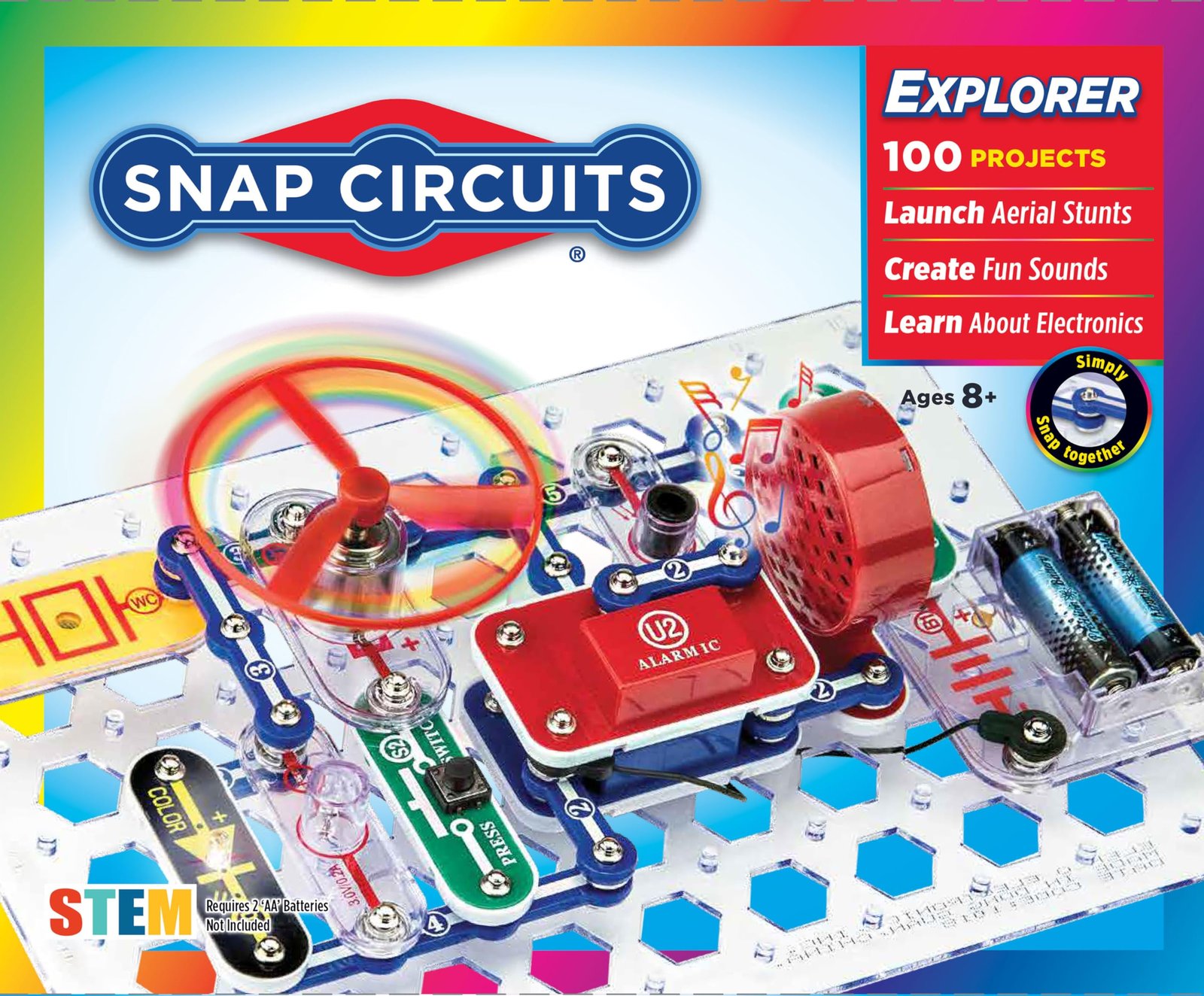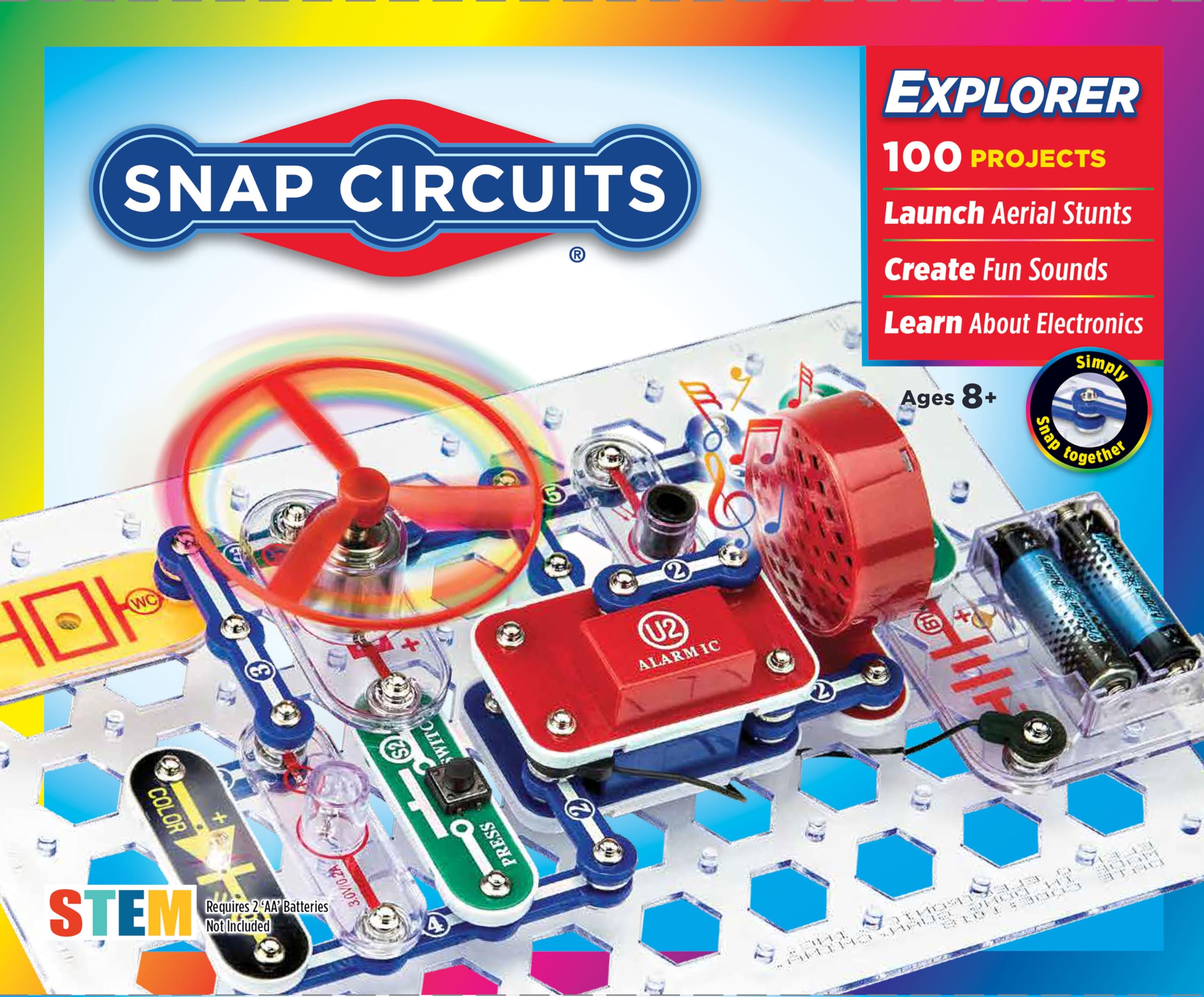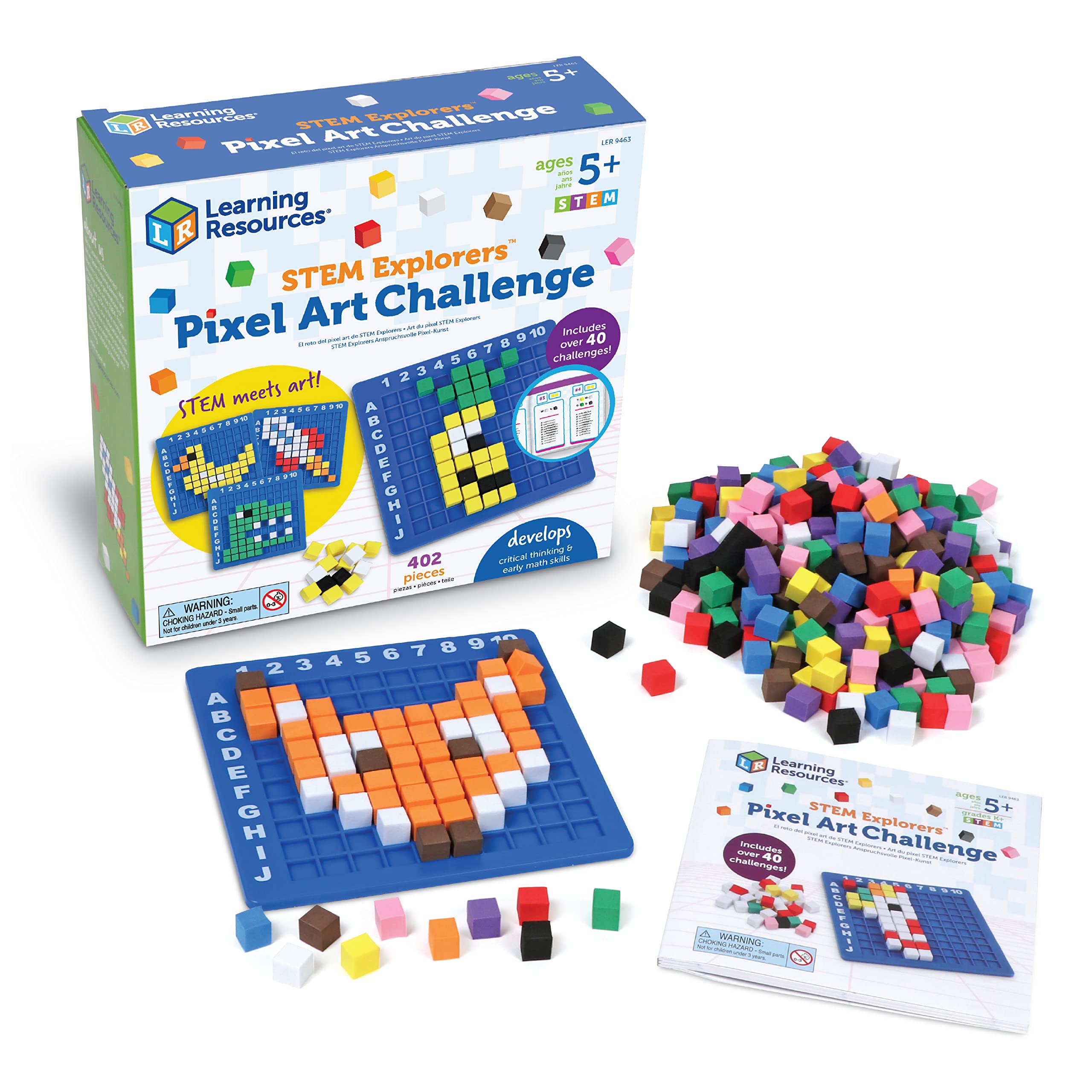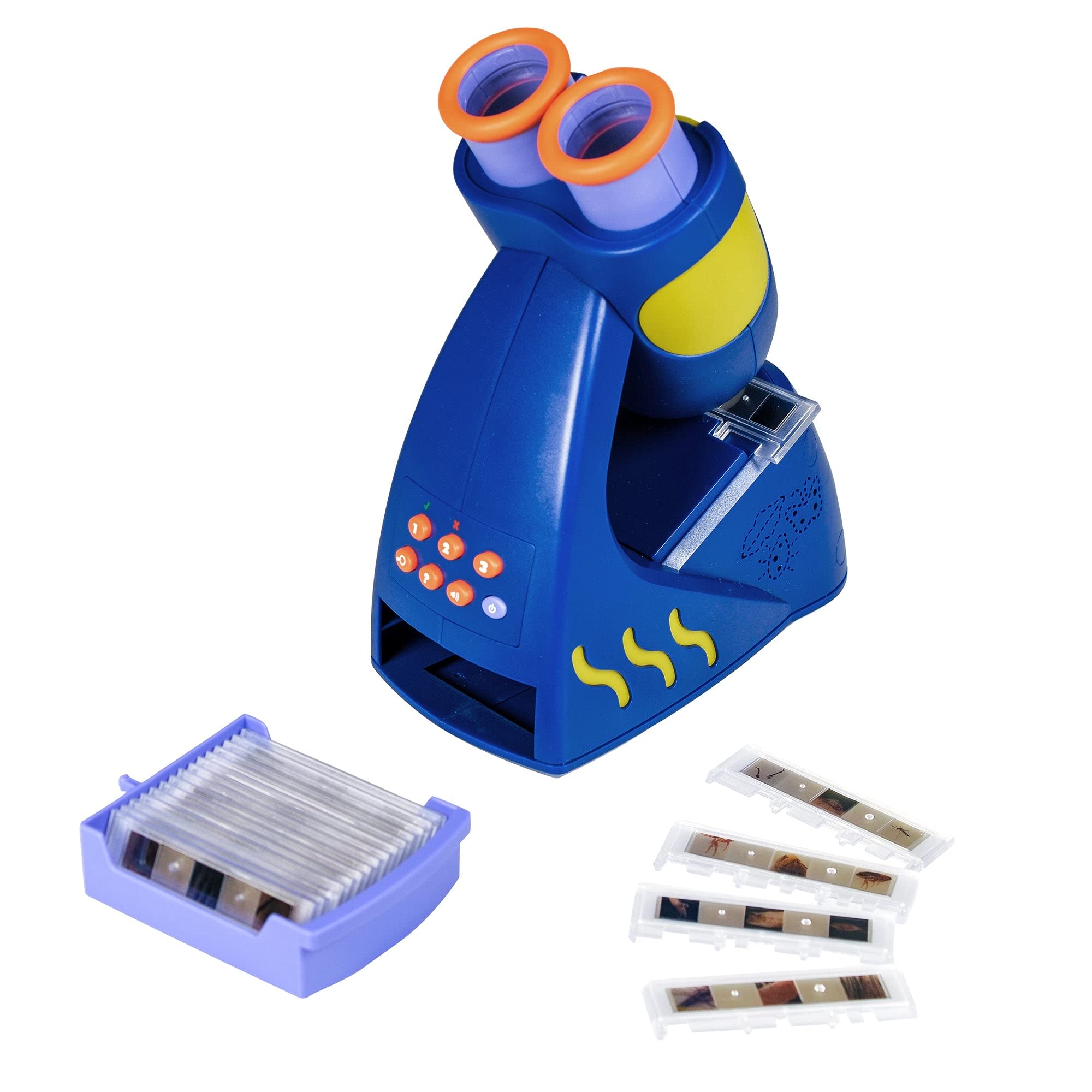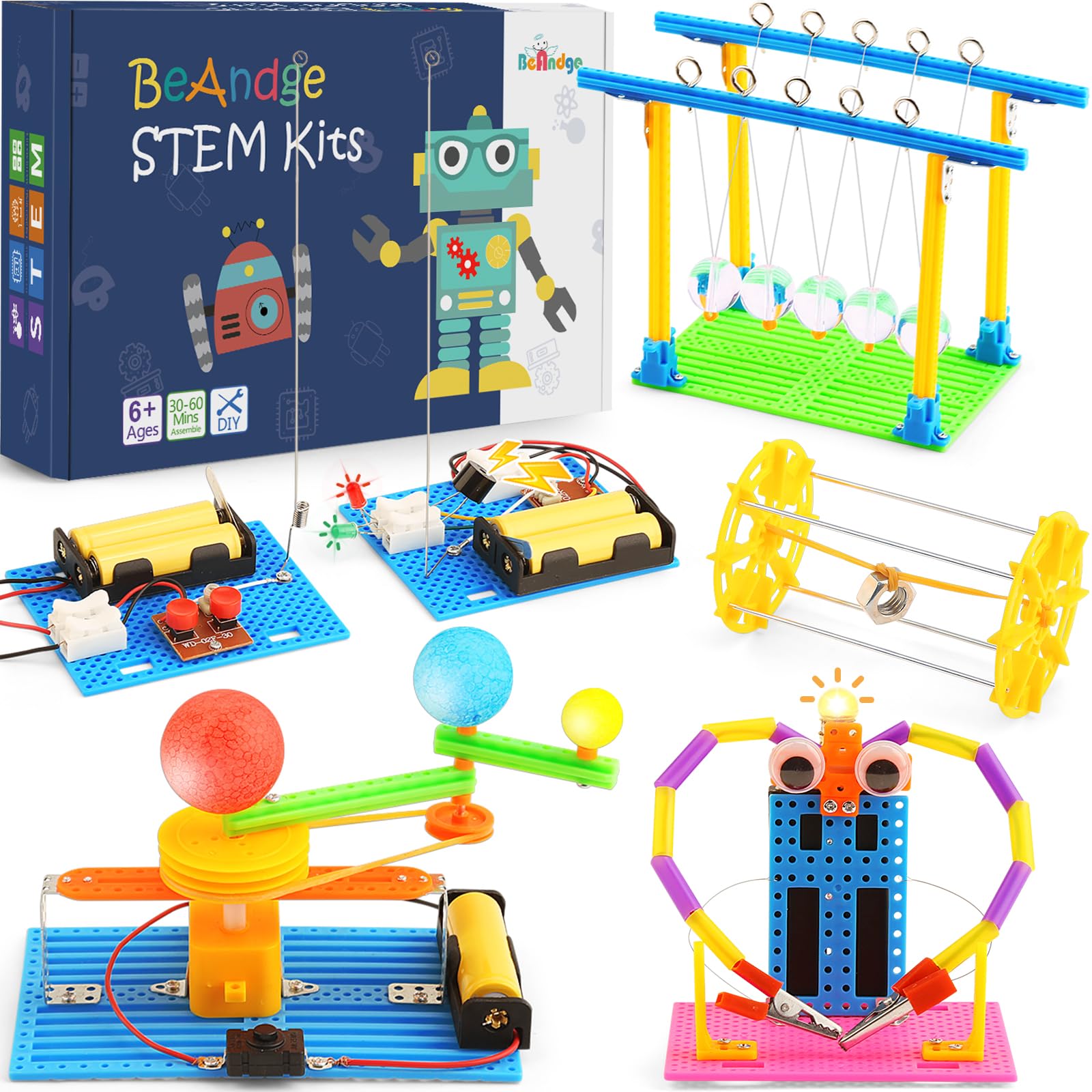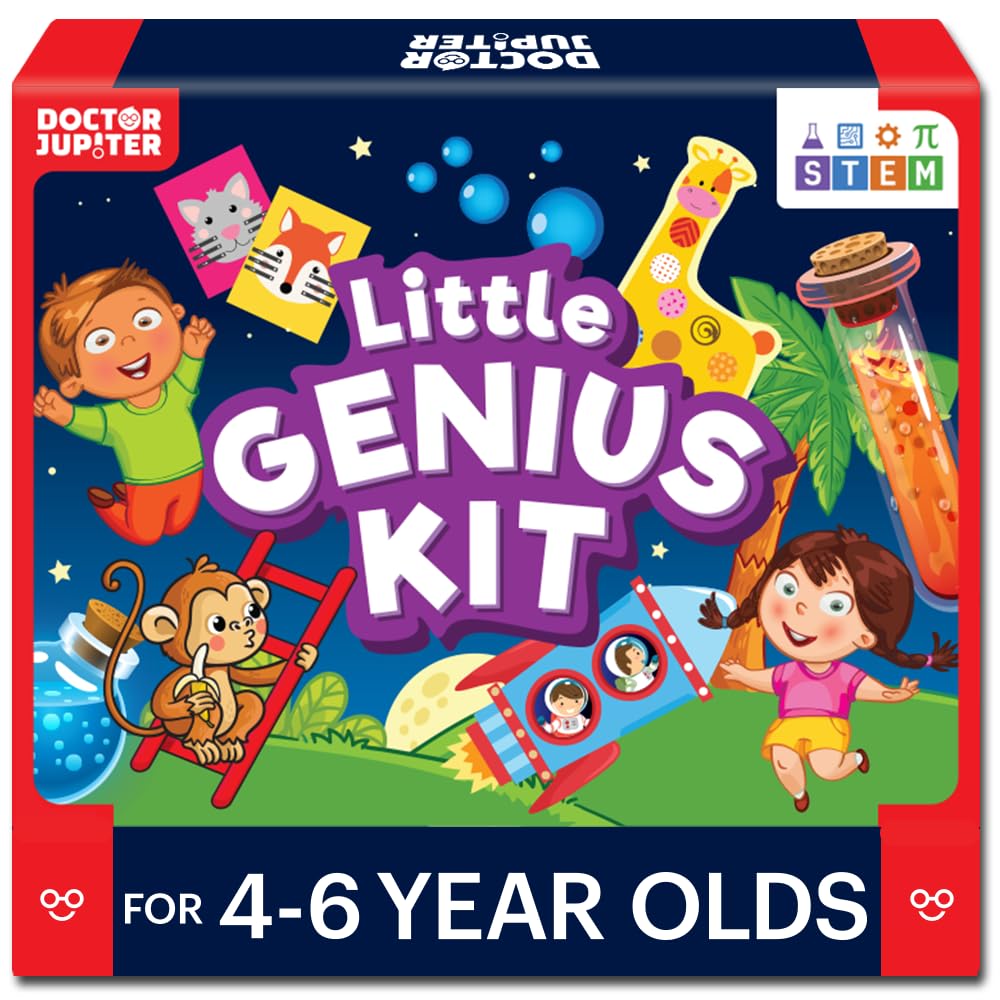In today’s fast-paced academic world, educators are increasingly combining fun and learning.
Science STEM educational games are designed to engage students by blending essential scientific concepts with game-like elements.
These games are not just about playing; they are a gateway to exploring science, technology, engineering, and mathematics in an interactive way.
These games offer children of varying ages the opportunity to develop critical thinking and problem-solving skills while seamlessly integrating learning with play.
Best Science STEM Educational Games
We’ve put together our top picks for the best science STEM educational games out there.
These games are all about making learning fun and interactive.
Let’s explore the options that will spark curiosity and creativity in learners of all ages.
Snap Circuits Jr. Electronics Kit
If you’re looking to spark an interest in electronics for kids, Snap Circuits Jr. might be the perfect educational gift.
- Engaging hands-on learning experience
- Easy-to-follow color-coded instructions
- Encourages creativity by designing circuits
- Requires adult guidance for younger users
- Limited to basic electronic concepts
- Batteries not included
Let’s dive into this fantastic kit.
Snap Circuits Jr. provides a hands-on introduction to electronics, and we think it’s ideal for curious minds aged 8 and up.
The set includes over 30 snap-together parts, allowing users to build over 100 projects, from simple alarms to sound-activated switches.
What’s great is the ease of assembly.
The numbered and color-coded pieces make it straightforward to create fascinating gadgets without any need for soldering.
Kids can explore how electricity works in a fun and practical way through varied projects.
While the projects start basic, they increase in complexity, which allows users to build their skills progressively.
It’s a package that combines learning and amusement, though a couple of extra AA batteries will be needed to get things started.
For parents and educators, this could be a smart way to give kids a playful yet educational journey into the basics of electrical engineering.
STEM Explorers Pixel Art Challenge
A fantastic choice for kids who enjoy art and coding challenges while developing their problem-solving skills.
- Encourages creativity through fun pixel art challenges
- Enhances coding and math skills in a playful way
- Durable and safe materials for long-lasting use
- Instructions may be difficult for younger kids without guidance
- Cubes can be small, requiring careful handling for young kids
- Limited variety of challenges after extensive use
Kids can explore their creativity with the Learning Resources STEM Explorers Pixel Art Challenge.
It ties together art and STEM in a manner that’s engaging, making learning enjoyable as children work through coding and math tasks.
This set’s creative approach brings the world of pixels alive, resembling the classic 8-bit video games we all know and love.
The STEM Explorers Pixel Art Challenge helps kids build essential skills through making incredible 2-D pixel art.
With over 40 challenges, there’s plenty to keep little artists entertained.
Children improve their critical thinking as they solve these fun tasks, making this a perfect addition to any learning environment, whether at home or in a classroom.
It’s designed for kids aged 5 and up, focusing on interactive learning.
While the activities are entertaining, young ones might need a bit of guidance to fully enjoy them.
Despite this, kids tend to love the vibrant, screen-free pastime it offers, encouraging problem-solving and imaginative play.
GeoSafari Jr. Talking Microscope
A fun learning tool that sparks kids’ curiosity about the natural world with interactive features and engaging content.
- Exciting interactive learning experience
- Easy to use for young children
- Compact design for easy storage
- Limited slide variety
- Requires AAA batteries
- Could benefit from additional slide sets
Kick-starting a child’s interest in science can be challenging, but the GeoSafari Jr. Talking Microscope makes it entertaining and educational.
This vibrant gadget introduces preschoolers to the wonders of nature, piquing their curiosity with narrated facts by Bindi Irwin.
It’s designed with young explorers in mind — double eyepieces eliminate the struggle of squinting with one eye, and its 60 vivid images provide a captivating dive into science.
The simplicity of its use means kids can jump into science without a fuss, while tidy storage keeps everything neat.
Though it might leave us wishing for more slide options, the Talking Microscope makes up for it with its engaging quizzes and facts that encourage independent exploration.
Overall, it’s a clever way to make learning genuinely enjoyable.
BeAndge STEM Science Kit
This kit is an engaging choice for kids who love exploring science and engineering through hands-on learning.
- Encourages creativity and critical thinking
- Offers a variety of experiments
- Suitable for a range of ages
- Some parts need adult supervision
- Requires additional batteries
- Loud noise from certain components
Let’s dive into what makes the BeAndge STEM Science Kit a great pick.
This kit offers five unique experiments, like Newton’s Cradle and a Telegraph, perfect for hands-on fun.
It’s designed to ignite curiosity and problem-solving skills in children between 6 and 14 years old.
While the educational benefits are impressive, some adult assistance might be required, especially for the younger kids.
The extra attention ensures safety and helps them enjoy the challenges of assembling the projects together.
On the practical side, remember to grab some AA batteries since they’re not included in the package.
Also, be prepared for the telegraph’s loud noise, as it might come off a bit too intense for some.
Despite these minor issues, kids can look forward to an enriching experience.
Doctor Jupiter Little Genius Kit
If you’re looking for a fun and safe way to spark your child’s love for learning, the Doctor Jupiter Little Genius Kit could be the perfect pick.
- Packed with safe and high-quality materials
- Provides a diverse range of educational activities
- Encourages hours of screen-free entertainment
- Some components are designed for single use
- Might not hold interest for older kids
- Could require parental supervision for certain activities
Let’s dive right into the Doctor Jupiter Little Genius Kit, a treasure trove of fascinating and educational toys.
This kit is carefully designed with the developmental needs of children aged 4 to 6 in mind.
The assortment of tools and activities aims to cultivate an early love for STEM subjects.
What’s charming about this set is its ability to make learning incredibly fun.
Kids can dig into a variety of science experiments, explore the animal world with an encyclopedia, and even engage in classic games.
It’s like giving them a whole world to explore, right at home.
Each piece is chosen to be engaging, safe, and perfect for curious young minds.
Nevertheless, we should point out there are some considerations.
Some of the items might only be suitable for one-time use, and younger kids may need some help getting started.
Despite these minor constraints, this kit offers a robust and enjoyable learning experience.
Buying Guide
When choosing a science STEM educational game, we need to focus on a few key features to make the best choice.
Age Appropriateness
Games often have recommended age ranges.
We need to pick something suitable for our target age group.
This ensures it’s challenging but not overwhelming.
Educational Content
Let’s look for games that align with educational goals.
Whether we’re interested in physics, chemistry, or biology, the content should match the subject area we want to explore.
Engagement Factor
We want games that are fun and engaging.
Vibrant graphics, intriguing stories, or interactive elements can make learning feel like playtime.
Ease of Use
User-friendly interface matters.
We need a game with a simple navigation and clear instructions.
This will ensure everyone can jump in without confusion.
Replayability
The best games offer repeated fun.
Games with multiple levels or scenarios provide lasting engagement and value.
Cost Consideration
Pricing varies widely.
While free options are appealing, we often get more features with paid versions.
Let’s weigh what fits our budget and offers the best bang for our buck.
Multiplayer Options
Some games allow us to play with friends or families, adding a social twist to learning and making it more enjoyable.
Platform Compatibility
Ensure the game is compatible with the devices we’re using, whether it’s a PC, tablet, smartphone, or gaming console.
| Feature | Importance |
|---|---|
| Age Appropriateness | Ensures suitability |
| Educational Content | Aligns with learning goals |
| Engagement Factor | Keeps interest alive |
| Ease of Use | Simple navigation |
| Replayability | Offers repeated fun |
| Cost Consideration | Balances budget with features |
| Multiplayer Options | Adds social interaction |
| Platform Compatibility | Ensures device functionality |

